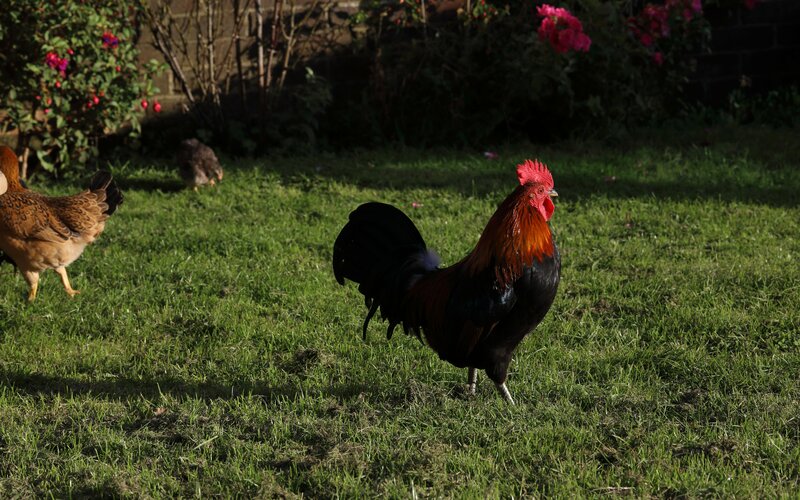
Alternative stable mates
Our latest visit to Tina Cook’s yard saw us meet her horses’ two-legged stable mates – chickens! But which are the best breeds to keep and why do chickens and horses get along so well?
Why horses and chickens go so well together:
- Chickens will scratch through horse manure, spreading the manure piles so that they dry out, which will kill worm larvae. They also eat some of the larvae, helping to protect your horse.
- Chickens eat insects and flies that could potentially irritate horses.
- Chickens are good at keeping the stable tidy – they eat small pieces of grain or feed dropped by your horse, keeping away flies and rodents.
- As the stable floor is kept tidy by the chickens, your horse is less likely to search the ground for food and accidentally ingest dirt and sand.
- The general noise and movement of chickens will help acclimatise your horse to distracting or surprising noises at events.
- Chicken manure is good fertiliser.
Some precautions when keeping horses and chickens together:
- Chickens can carry salmonella. Though salmonella is widespread (it can even live in soil), it’s a good idea to keep your chickens away from your horse’s feed and hay.
- Chickens can eat horse feed, but some commercial chicken feed is poisonous to horses. Keep your horses away from the chicken feed.
- Some equine dewormers are poisonous to birds, so keep chickens away from manure for several days after deworming your horses.
Chickens have been domesticated for 10,000 years, their origins traceable to Asia, where the Red Jungle Fowl, or Gallus Gallus, a small pheasant, provided eggs, meat and feathers.
It wasn’t until 4,000 years ago, however, that the domesticated chicken reached the Indus Valley, from where trade brought it to Europe and Africa.
The modern history of British chickens is really very recent – only since Queen Victoria’s reign were breed standards recorded. Some breeds, such as Old English Game Fowl, have likely remained unchanged for centuries, while others have been developed in terms of size and colour.
Some of the best British chicken breeds are:
- Old English Pheasant Fowl – a reliable layer, producing up to 200 white or lightly tinted eggs a year. This breed comes from Yorkshire and Lancashire, Cumberland and Westmoreland. The Old English Pheasant Fowl emerged as a breed in itself in 1914, when the breed club was formed. It’s easy to see why they are named after their wild ancestors – not only are they the most flighty of all English breeds, but their rich colouring and bright, inquisitive eye certainly gives them a pheasant-like appearance.
- Light Sussex – one of the oldest breed clubs in the UK, formed in 1903. Unsurprisingly, these chickens come from the South East – Kent, Sussex and Surrey. There’s plenty of variation in colours, including brown, buff, coronation, light, red, speckled, silver and white, and there are both standard and bantam variations. The breed is dual purpose, producing plenty of meat and is also a good forager.
- Norfolk Grey – another rare breed, the Norfolk Grey is a very handsome fowl indeed, being black with silverwhite hackles. It’s a good layer, producing up to 220 tinted eggs a year. The history of the Norfolk Grey is fairly recent – created by Fred Myhill of Norwich, the first birds had the sinister name of Black Marias, the nickname given to World War I German military shells, and were shown for the first time in 1920. Understandably, the name proved unpopular and was changed to Norfolk Greys in 1925. It is thought that Mr Myhill crossed Silver Birchen Game with Duckwing Leghorns to achieve the original birds. During World War II the number declined, and it was thought to be extinct by the 1960s. However in 1974, a trio was discovered near Banbury and, while still rare today, the numbers have improved since that time.
A version of this article first appeared in My Countryside magazine.
